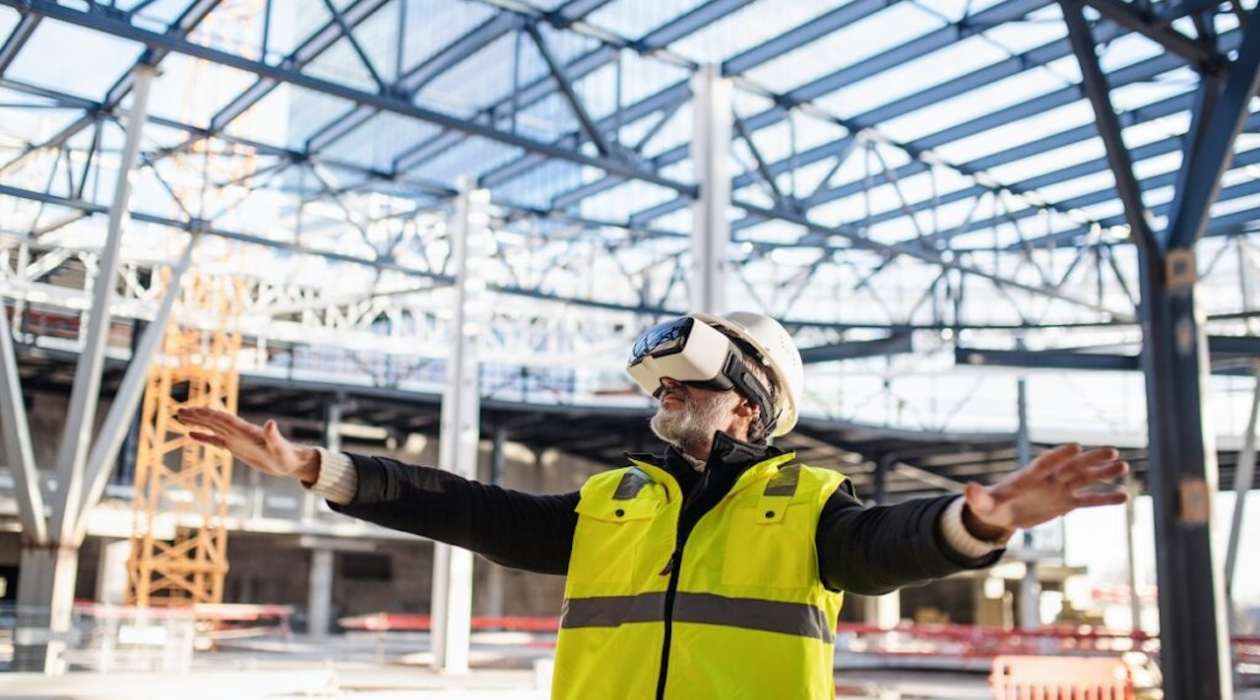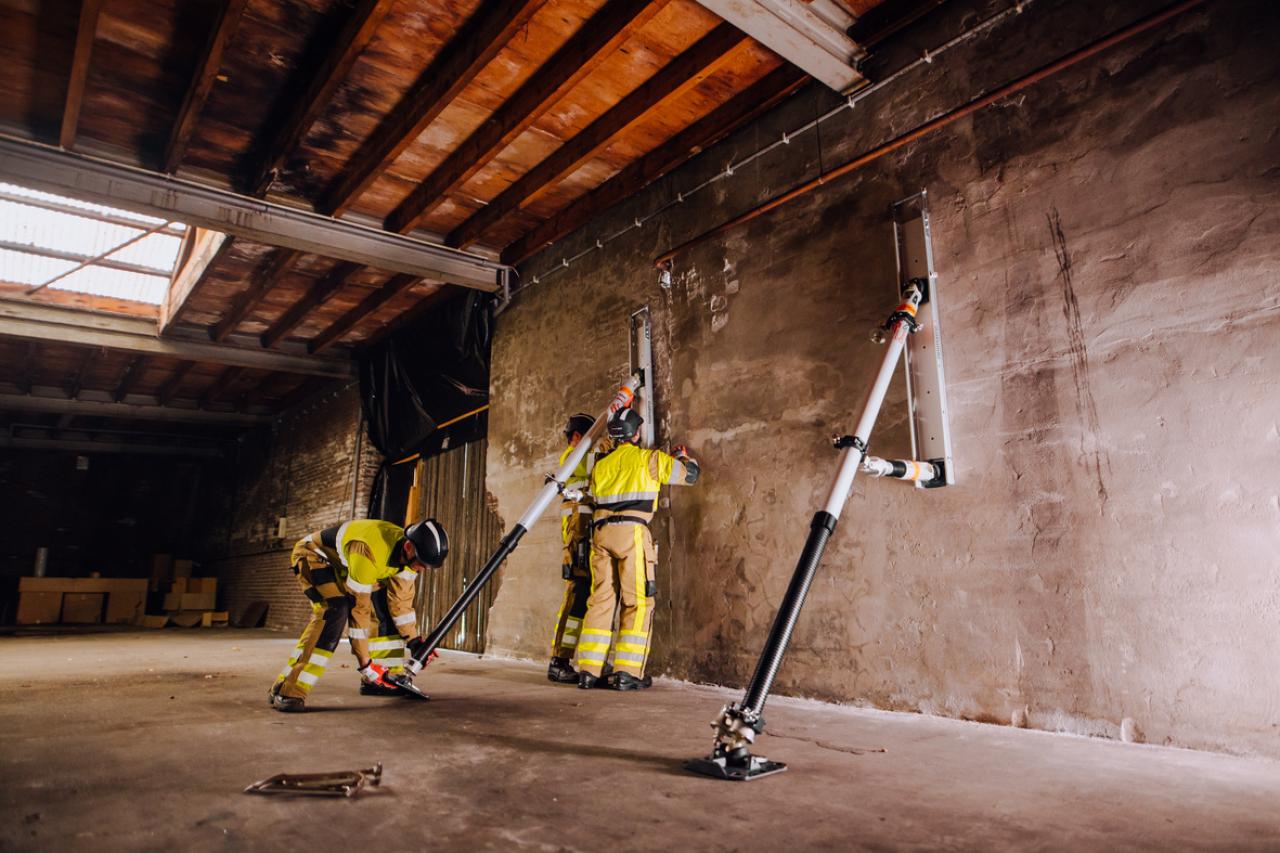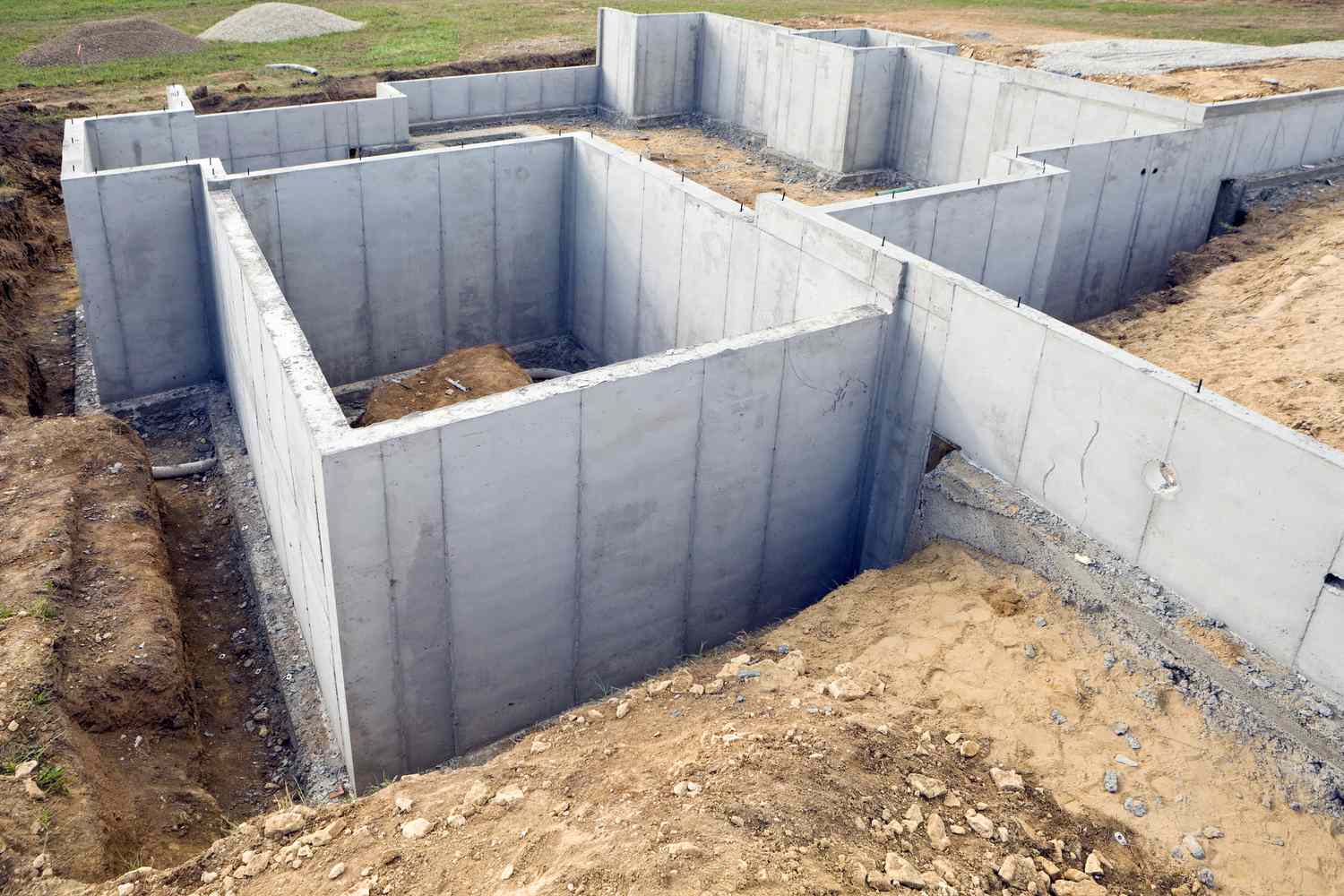Home>diy>Building & Construction>What Is VDC Construction


Building & Construction
What Is VDC Construction
Modified: December 7, 2023
Learn all about VDC construction, a revolutionary approach to building construction that leverages advanced technology and digital processes. Discover the benefits of implementing VDC on your next project.
(Many of the links in this article redirect to a specific reviewed product. Your purchase of these products through affiliate links helps to generate commission for Storables.com, at no extra cost. Learn more)
Introduction
Welcome to the world of Virtual Design and Construction (VDC) in the construction industry. In recent years, the advent of technology has revolutionized the way we approach building projects. VDC Construction, also known as Building Information Modeling (BIM), is a cutting-edge method that integrates technology, design, planning, and construction processes to streamline project execution. This comprehensive approach enhances collaboration, minimizes errors, reduces costs, and improves overall project efficiency.
VDC Construction combines the power of 3D modeling, intelligent data analysis, and project management software to create a virtual representation of a building before it is constructed physically. This virtual model, known as the BIM model, serves as a centralized and collaborative hub that enables architects, engineers, contractors, and other stakeholders to work together seamlessly throughout the project lifecycle.
With VDC Construction, the traditional linear and fragmented approach to construction is replaced with a more dynamic and interconnected approach. Design changes, clash detections, material quantities, and project scheduling can all be visualized and analyzed in real-time, providing valuable insights and allowing for proactive problem-solving.
The benefits of implementing VDC Construction are vast and have transformative effects on the building industry. In this article, we will explore the definition of VDC Construction, delve into its benefits, discuss the implementation process, highlight challenges and limitations, present case studies of successful projects, and delve into the future of VDC Construction.
Whether you are an industry professional looking to enhance your construction projects or simply someone interested in learning about the latest developments in the field, this article will provide you with a comprehensive understanding of VDC Construction and its significance in the industry.
Key Takeaways:
- VDC Construction, also known as Building Information Modeling (BIM), revolutionizes the construction industry by integrating technology, design, and project management to optimize the entire construction process. It enhances collaboration, minimizes errors, reduces costs, and improves overall project efficiency.
- The future of VDC Construction holds immense potential to revolutionize the construction industry by harnessing the power of emerging technologies, embracing collaboration, and incorporating sustainable practices, paving the way for more efficient, sustainable, and successful building projects.
Read more: What Is The Difference Between BIM And VDC?
Definition of VDC Construction
Virtual Design and Construction (VDC) Construction, also known as Building Information Modeling (BIM), is an innovative approach to construction that integrates technology, design, and project management to optimize the entire construction process. It involves the creation and utilization of a digital 3D model called the BIM model, which serves as a central hub for all project stakeholders.
The BIM model is a collaborative platform that enables architects, engineers, contractors, and other parties involved in the project to work together in a synchronized manner. It provides a comprehensive and real-time overview of the project, incorporating design elements, construction details, material specifications, and scheduling information.
Unlike traditional construction methods that rely on 2D drawings and manual coordination, VDC Construction allows for a more integrated and efficient workflow. The BIM model acts as a single source of truth, where all project-related information is stored, updated, and shared. This eliminates the need for multiple versions of drawings and reduces the potential for errors and miscommunication.
Within the BIM model, each building component is digitally represented with specified dimensions, properties, and relationships to other elements. This level of detail allows for advanced analysis, such as clash detection, which identifies potential conflicts between different building systems, such as mechanical, electrical, and structural elements. By addressing clashes virtually before construction begins, costly and time-consuming rework can be avoided.
Furthermore, the BIM model facilitates accurate quantity takeoffs, cost estimation, and project scheduling. The integrated nature of VDC Construction allows project stakeholders to extract information from the model to generate reports, calculate material quantities, and develop construction schedules. This data-driven approach improves project cost control, reduces waste, and ensures timely completion.
Overall, VDC Construction is a transformative approach that enhances collaboration, minimizes errors, reduces overall project cost, and improves construction efficiency. By leveraging technology and data throughout the construction process, it paves the way for more sustainable and successful building projects.
Benefits of VDC Construction
VDC Construction offers numerous benefits that significantly contribute to the success of building projects. Let’s explore some of the key advantages:
- Enhanced Collaboration: VDC Construction promotes seamless collaboration among project stakeholders. The BIM model serves as a centralized platform where architects, engineers, contractors, and subcontractors can work together in real-time, reducing miscommunication and enhancing overall project coordination.
- Improved Design Accuracy: With VDC Construction, design accuracy is greatly improved. The BIM model allows designers to visualize the building in 3D, enabling a better understanding of spatial relationships and identifying design issues early in the process. This leads to more accurate and efficient designs.
- Clash Detection and Conflict Resolution: One of the significant advantages of VDC Construction is its ability to detect clashes and conflicts between different building system components. By identifying and resolving these clashes virtually before construction begins, potential rework and delays can be minimized.
- Optimized Resource Allocation: VDC Construction enables accurate quantity takeoffs and material tracking, allowing project stakeholders to optimize resource allocation. This leads to reduced waste, better inventory management, and improved cost control.
- Minimized Rework and Change Orders: The collaborative nature of VDC Construction reduces the likelihood of errors and costly change orders. With a detailed and accurate BIM model, design-related issues can be addressed early, minimizing the need for rework and potential delays.
- Better Project Visualization: The use of 3D modeling in VDC Construction provides stakeholders with a realistic visualization of the project. This aids in better understanding of the design intent, enables stakeholders to make informed decisions, and improves communication with clients and stakeholders.
- Improved Project Scheduling: VDC Construction allows project schedules to be developed and optimized within the BIM model. The integration of scheduling information with the model enables stakeholders to identify potential conflicts and ensure smooth project execution.
- Increased Safety: VDC Construction enhances safety by simulating the construction process and identifying potential hazards before they occur on site. This allows for proactive safety measures to be taken, reducing accidents and improving overall job site safety.
By harnessing the power of technology and collaboration, VDC Construction offers significant benefits to all project stakeholders. It streamlines the construction process, reduces risks, enhances project quality, and ultimately helps deliver successful building projects.
Implementation Process of VDC Construction
The implementation of VDC Construction involves several key steps that ensure a successful integration of technology, design, and construction processes. Let’s explore the typical implementation process:
- Project Assessment: The first step in implementing VDC Construction is to assess the project’s suitability for this approach. Factors such as project size, complexity, and available resources are considered. The project team evaluates the potential benefits and determines if VDC Construction aligns with the project’s goals.
- Team Training: Once the project assessment is complete, the project team undergoes training to familiarize themselves with the tools and techniques used in VDC Construction. This includes training on BIM software, 3D modeling, clash detection, and project management tools. Training ensures that team members are equipped with the necessary skills to effectively collaborate and utilize the BIM model.
- Model Development: The next step is to develop the BIM model, which serves as the foundation of VDC Construction. This involves creating a digital representation of the building with detailed information about its components, materials, and systems. The BIM model is continuously updated and refined throughout the project lifecycle.
- Collaboration and Coordination: Once the BIM model is in place, project stakeholders collaborate and coordinate their efforts within the model. This involves sharing and accessing the model, making design updates, conducting clash detection, and resolving conflicts. Regular coordination meetings and communication channels are established to ensure effective collaboration.
- Detailing and Quantification: As the project progresses, further detailing and quantification of the BIM model takes place. This includes adding specific dimensions, material quantities, and cost-related information. This allows for accurate cost estimation, procurement planning, and scheduling optimization.
- Simulation and Visualization: The BIM model is utilized to simulate and visualize the construction process. This includes creating construction sequences, simulating the building process, and identifying potential construction-related issues. The visualization enables stakeholders to understand the construction sequence, plan logistics, and identify safety hazards.
- On-site Integration: As construction begins, the BIM model becomes an invaluable tool for on-site integration. Field personnel can access the model using mobile devices or tablets, enabling them to view updated drawings, access specifications, and communicate real-time issues. This streamlines communication between the office and the field and ensures that everyone is working with the most up-to-date information.
- Continuous Monitoring: Throughout the project, the BIM model is continuously monitored and updated as construction progresses. Changes, updates, and as-built information are recorded and incorporated into the model, ensuring that accurate information is available for future use, maintenance, and facility management.
By following a systematic implementation process, VDC Construction can be effectively integrated into construction projects. It maximizes collaboration, enhances coordination, improves communication, and ultimately leads to successful project outcomes.
VDC construction, or Virtual Design and Construction, is a process that uses digital tools to create 3D models and simulations for planning and managing construction projects. It can help improve collaboration, reduce errors, and streamline the construction process.
Challenges and Limitations of VDC Construction
While VDC Construction offers numerous benefits, it is essential to acknowledge the challenges and limitations associated with its implementation. Here are some key challenges that may arise:
- Technological Expertise: Implementing VDC Construction requires a certain level of technological expertise. Project teams need to be trained in using BIM software and other tools effectively. The learning curve and initial investment in technology can be a hurdle for some organizations.
- Data Management: Managing vast amounts of data within the BIM model can be challenging. Ensuring data integrity, version control, and access restrictions requires dedicated resources and proper protocols to be in place. Failure to manage data effectively can hinder collaboration and lead to confusion.
- Interoperability: Integrating different software platforms and ensuring interoperability between them can be challenging. Project teams need to ensure that software applications can communicate with each other and exchange data seamlessly. Incompatibility issues may arise when working with different vendors or software versions.
- Cultural Shift: Implementing VDC Construction often requires a cultural shift within an organization. Stakeholders need to embrace the collaborative and integrated nature of VDC Construction, which may require changes in traditional workflows and communication patterns. Resistance to change can hinder successful implementation.
- Cost and Resource Allocation: While VDC Construction can lead to cost savings in the long run, the initial investment in technology, training, and infrastructure can be a challenge for some organizations. Allocating resources and budget for VDC Construction needs to be carefully planned and managed.
- Project Size and Complexity: VDC Construction is most beneficial for complex and large-scale projects. Implementing it on smaller projects with limited resources may not be cost-effective or practical. Tailoring the level of detail and complexity of the BIM model to match the project scope is necessary to ensure efficient implementation.
- Legal and Contractual Issues: The legal and contractual framework around VDC Construction is still evolving. Parties involved in a project need to address contractual considerations related to intellectual property rights, liability, and responsibility for errors and omissions in the BIM model. Ensuring proper legal agreements and contracts are in place is crucial.
- Skills Gap: The construction industry may face a skills gap in terms of VDC Construction expertise. Finding professionals with the necessary skills and experience in BIM modeling, clash detection, and project management tools can be a challenge. Investing in training and upskilling existing staff is essential to overcome this limitation.
While these challenges and limitations exist, they can be overcome with careful planning, adequate training, and effective project management. It is important to consider these factors when implementing VDC Construction and develop strategies to mitigate any potential issues.
Read more: What Is Construction
Case Studies of Successful VDC Construction Projects
Several noteworthy construction projects have successfully implemented VDC Construction to achieve remarkable outcomes. Here are a few compelling case studies:
- Burj Khalifa: The iconic Burj Khalifa in Dubai, United Arab Emirates, stands as the tallest building in the world. VDC Construction played a crucial role in its successful construction. The BIM model enabled seamless collaboration between the design team, structural engineers, and contractors, ensuring that the complex geometry and structural integrity of the building were maintained. Clash detection and coordination using the BIM model allowed for early identification of potential issues and efficient resolution.
- Seattle-Tacoma International Airport Expansion: The expansion project of Seattle-Tacoma International Airport utilized VDC Construction to streamline the construction process. The BIM model facilitated collaboration between architects, engineers, and contractors, resulting in improved coordination and reduced rework. Clash detection and visualization capabilities allowed for efficient clash resolution and accurate quantity takeoffs, resulting in cost savings and schedule adherence.
- Cedars-Sinai Advanced Health Science Pavilion: The Cedars-Sinai Advanced Health Science Pavilion in Los Angeles, California, is a state-of-the-art medical facility that employed VDC Construction. The BIM model enabled precise coordination between construction disciplines and integration of complex medical systems. Through clash detection and visualization, potential issues were resolved before construction, resulting in improved efficiency and reduced construction conflicts. The accurate and detailed BIM model also facilitated accurate cost estimation and resource planning.
- Millennium Tower: The Millennium Tower in San Francisco, California, is another notable project that benefited from VDC Construction. The BIM model allowed for seamless coordination between architects, structural engineers, and contractors. Clash detection capabilities helped identify potential clashes between utility systems, ensuring efficient resolution. The BIM model also aided in analyzing the building’s energy performance and optimizing its sustainability features.
- London Crossrail Project: The Crossrail project in London, United Kingdom, utilized VDC Construction to successfully construct an extensive underground rail network. The BIM model played a crucial role in coordinating and visualizing the complex network of tunnels, stations, and rail systems. The clash detection capabilities within the BIM model helped identify and resolve clashes between different construction elements, minimizing rework and improving overall project efficiency.
These case studies exemplify how VDC Construction has transformed the construction industry, resulting in successful and efficient project outcomes. By leveraging advanced technology and collaboration, these projects achieved improved coordination, reduced errors, enhanced cost control, and delivered buildings of exceptional quality.
Future of VDC Construction
The future of Virtual Design and Construction (VDC) is bright, as the construction industry continues to embrace technology and innovation. Here are some trends that will shape the future of VDC Construction:
- Advanced Visualization and Augmented Reality: As technology continues to evolve, the visual capabilities of VDC Construction will become even more advanced. Augmented reality (AR) will play a significant role, allowing stakeholders to overlay digital models onto the physical environment, providing a more immersive and interactive experience. This will greatly enhance communication, decision-making, and problem-solving during the construction process.
- Internet of Things (IoT) Integration: The integration of IoT devices within the BIM model will allow for real-time monitoring and data collection. This will enable proactive maintenance, improved energy efficiency, and enhanced safety. Sensors embedded within the building components will provide valuable data, allowing for predictive analysis and optimizing building performance.
- Artificial Intelligence (AI) and Machine Learning: AI and machine learning algorithms will have a substantial impact on VDC Construction. These technologies will enable automated analysis, clash detection, and optimization of construction sequences. AI-powered systems can extract valuable insights from the vast amount of data within the BIM model, improving decision-making and project outcomes.
- Cloud Collaboration and Mobile Technology: Cloud-based collaboration platforms will enhance the accessibility and availability of the BIM model. Project stakeholders will be able to access, review, and update the model in real-time, regardless of their location. Mobile technology will further enable field personnel to interact with the BIM model on-site, increasing efficiency and reducing errors.
- Automation and Robotics: The use of automation and robotics will continue to evolve in the construction industry, impacting VDC Construction. Robotic systems can assist in tasks such as material handling, installation, and quality control. Integration of these technologies with the BIM model will streamline construction processes, improve productivity, and reduce labor-intensive tasks.
- Integration of Sustainability: The future of VDC Construction will place a stronger emphasis on sustainability. The BIM model will incorporate detailed sustainability analysis, including energy modeling, daylight analysis, and material life cycle assessments. This will enable architects and engineers to optimize building design for energy efficiency, minimize environmental impact, and achieve sustainability goals.
- Collaborative Project Delivery Methods: The future will witness a greater adoption of collaborative project delivery methods such as Integrated Project Delivery (IPD) and Public-Private Partnerships (PPP). These methods encourage early engagement of all stakeholders, including contractors and suppliers, leading to better collaboration, risk-sharing, and improved project outcomes.
- Data-driven Insights and Predictive Analytics: With the increasing availability of data, the future of VDC Construction will leverage data-driven insights and predictive analytics. Advanced analytics tools will extract valuable information from the BIM model, enabling project stakeholders to make informed decisions, improve project performance, and optimize construction processes.
The future of VDC Construction holds immense potential to revolutionize the construction industry. By harnessing the power of emerging technologies, embracing collaboration, and incorporating sustainable practices, the industry will pave the way for more efficient, sustainable, and successful building projects.
Conclusion
Virtual Design and Construction (VDC) Construction, also known as Building Information Modeling (BIM), has transformed the construction industry by integrating technology, design, and project management to optimize the entire construction process. Through the creation and utilization of a digital 3D model, VDC Construction improves collaboration, minimizes errors, reduces costs, and enhances overall project efficiency.
VDC Construction offers numerous benefits, including enhanced collaboration, improved design accuracy, clash detection and conflict resolution, optimized resource allocation, minimized rework and change orders, better project visualization, improved project scheduling, and increased safety. These advantages empower project stakeholders to streamline the construction process, reduce risks, and deliver successful building projects.
The implementation process of VDC Construction involves steps such as project assessment, team training, model development, collaboration and coordination, detailing and quantification, simulation and visualization, on-site integration, and continuous monitoring. Following this systematic approach ensures the seamless integration of technology, design, and construction processes.
While VDC Construction offers significant benefits, it is important to address the challenges and limitations associated with its implementation. These include technological expertise, data management, interoperability, cultural shift, cost and resource allocation, project size and complexity, legal and contractual issues, and the skills gap. By understanding and mitigating these challenges, organizations can maximize the full potential of VDC Construction.
Real-world case studies demonstrate the success of VDC Construction in notable projects such as the Burj Khalifa, Seattle-Tacoma International Airport Expansion, Cedars-Sinai Advanced Health Science Pavilion, Millennium Tower, and the London Crossrail Project. These projects showcase how VDC Construction enhances coordination, reduces errors, improves cost control, and delivers exceptional building quality.
The future of VDC Construction holds great promise as technology continues to advance. Trends such as advanced visualization and augmented reality, IoT integration, AI and machine learning, cloud collaboration, automation and robotics, sustainability integration, collaborative project delivery methods, and data-driven insights will shape the future of the industry. These advancements will further enhance the efficiency, sustainability, and success of construction projects.
In conclusion, Virtual Design and Construction (VDC) Construction has revolutionized the way we approach building projects. By leveraging technology, collaboration, and data-driven decision-making, VDC Construction maximizes efficiency, minimizes errors, and delivers successful building projects that meet the needs of the modern world.
Frequently Asked Questions about What Is VDC Construction
Was this page helpful?
At Storables.com, we guarantee accurate and reliable information. Our content, validated by Expert Board Contributors, is crafted following stringent Editorial Policies. We're committed to providing you with well-researched, expert-backed insights for all your informational needs.















0 thoughts on “What Is VDC Construction”